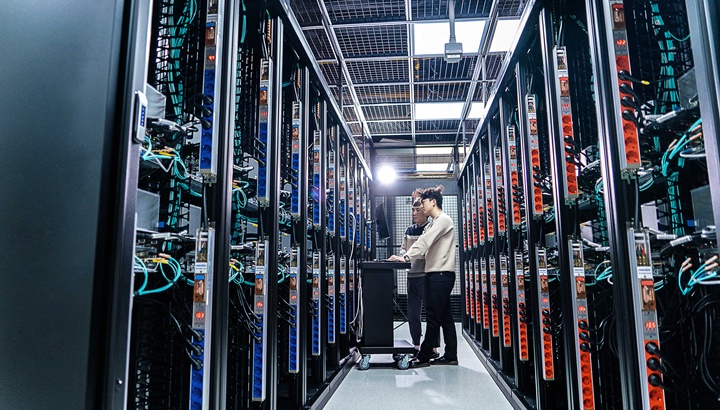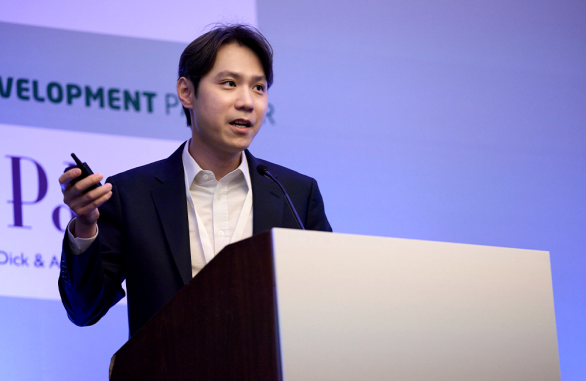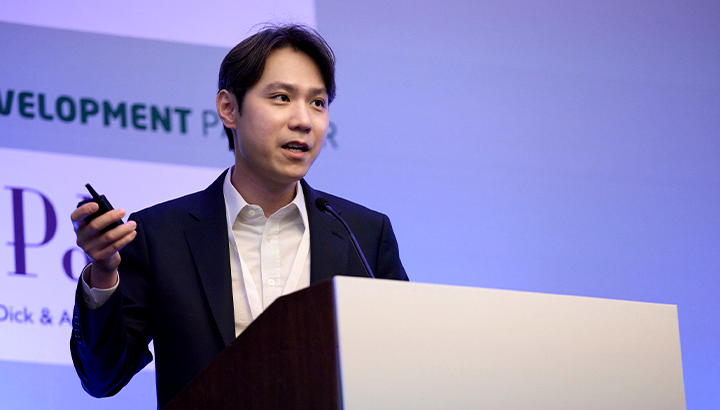SK Telecom implemented ‘DNA (Deep Network AI)’, a network analytics solution powered by AI for precise analyzation of telecommunication service and network quality, into their commercial network. The provider expects this technology to significantly reduce the time cost required to resolve customers’ issues such as call quality and throughput degradation as well as achieve greater efficiency of network operation.
Overcoming the Limits of Latitude-Longitude Based Analysis… 3D Analysis Used for Sophisticated Network Situation Analysis
In the mobile communication industry, accurately understanding the current state of the operating network is essential for effective network investment and operation. Previous methods of network quality analytics on call quality and data speed etc. have primarily been conducted on 2D outdoor space planes based on latitude and longitude. However, this flat, grid-based analysis has fallen short of accurately reflecting customer expectations for better quality.
For instance, customers may experience network quality issues inside a building that is part of multiple grid sections divided by latitude and longitude. Each grid section could include areas outside of the building which are irrelevant, increasing analysis time and decreasing accuracy. Similarly, previous analytics methods can be inefficient when large buildings or roads span across multiple grid sections. Customers are not living in grids, but in real-life spaces such as specific buildings, roads, and subway routes.

To address these limitations, SK Telecom developed the ‘DNA (Deep Network AI)’ technology, which analyzes and visualizes network situations in a 3D space by adding a map feature for buildings, roads, subways where customers usually stay or move around in.
DNA – Analyzing According to Customer’s Time, Place, Occasion

DNA utilizes AI-based network quality analysis technology, indoor positioning technology, and mobility analysis technology based on customers’ movement and stay data to accurately analyze their time, place, and occasion. The company predicts customer time and location by applying the collected data within the infrastructure to a transformer-based model, then the the DBSCANDensity-Based Spatial Clustering of Applications with Noise model to classify movement and stay situations. They also map network dataAnalyzed network data includes customer traffic, transmission speed, wireless call quality, and potential negative customer experiences such as data disconnection. according to the mode of transportation or purpose of staying in an area, allowing for precise analysis in each building environment or mobility scenario. This approach reduces the time required to resolve customer issues in the field and adjusts network quality, enhancing network operation efficiency as a result.

DNA also provides a 3D visualization of the analysis results, enabling network quality monitoring managers to better understand the network situation. For instance, areas with concentrated call volume or network traffic are represented as tall buildings. In the previous 2D method, they were shown as colors or dots. With DNA, monitoring managers can visually and comprehensively identify traffic volume analytics, customer-perceived throughput estimation, network coverage analysis, and issues experienced by the customer.
DNA Technology Applied in Seoul Metropolitan Area Contributed to Over 60% Improvement in Network Degradation Detection Time – To be Implemented in Future Infrastructure
Currently, SK Telecom has applied DNA analysis to over 70% of spaces in commercial buildings, subways, railroads, and roads in the Seoul metropolitan area. The average time to detect network degradation in the field has improved by over 60% compared to previous methods. Previously, engineers had to physically visit potential problem areas and manually inspect in order to resolve cell tower or capacity issues. With DNA, building-level analysis and map feature information resembling actual user patterns allow for quicker detection.
In addition to problem identification, SK Telecom anticipates that DNA will enable more accurate decision-making and planning for network installation and operation, cell tower upgrades, and small cell installation.
■ Developer Mini-Interview
Q: How long did it take from development to the commercialization of DNA?
A: We started developing DNA technology in 2022, and started providing insights into traffic, network quality, and bad customer experiences at the map feature level by early 2024.
Q: What plans are in store for the future?
A: One of the highest costs in infrastructure investment is cell tower installation. DNA technology will maximize investment cost efficiency by ensuring we identify optimal locations for cell towers. Currently, numerous engineers measure network quality across buildings, roads, and subways nationwide. DNA will assist in these measurements, helping to improve operational cost efficiency. While DNA is currently used as a solution for SKT’s own infrastructure, we plan to develop it into a B2B or global package solution, aiming for revenue generation.


















